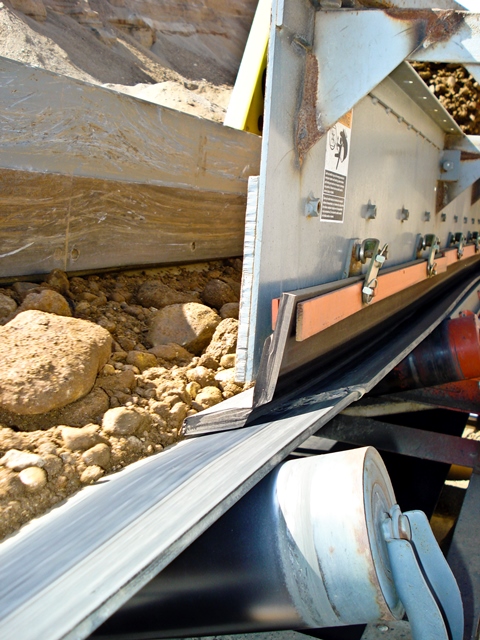Innovative Conveyor Belt Skirting System Introduced By Martin Engineering
Publicado: December 2nd 2014
 [Neponset, IL] – An innovator of modern bulk material handling technology has introduced a novel conveyor belt skirting system with a streamlined design engineered to fit virtually any conveyor with less maintenance and more efficiency. Martin® Self Adjusting Skirting prevents spillage and equipment breakdown caused by fugitive material by creating a constant tight seal to the belt. The unit self adjusts to rubber skirt wear, regardless of material volume and size diversity, allowing it to be an adaptable solution for an entire bulk material processing system across many different industries.
[Neponset, IL] – An innovator of modern bulk material handling technology has introduced a novel conveyor belt skirting system with a streamlined design engineered to fit virtually any conveyor with less maintenance and more efficiency. Martin® Self Adjusting Skirting prevents spillage and equipment breakdown caused by fugitive material by creating a constant tight seal to the belt. The unit self adjusts to rubber skirt wear, regardless of material volume and size diversity, allowing it to be an adaptable solution for an entire bulk material processing system across many different industries.
“As bulk material is processed, the conveyor belt speed, load and volume can change, which can affect the integrity of the skirting seal,” said Senior Product Specialist Dave Mueller. “One skirting system across the whole line that adjusts automatically to these diverse variations dramatically cuts man hours needed to maintain it.”
As the friction from the belt wears down the seal strip of standard skirting, workers have to shut down the conveyor and use tools to manually adjust it. Without this type of regular maintenance, fugitive material escapes from the belt, getting into bearings and other components, which can cause expensive and unnecessary production delays. Martin solves this problem by using a pressure arm attached to a clamp plate, which assures a constant belt seal, thus eliminating the need for manual adjustment.
The skirt requires just 1.25 inches (33 mm) of free belt area, making it the ideal fit for conveyors with chutes close to the belt edge. The durable EDPM rubber sealing strip is 0.75 inches (19 mm) wide and provides 2 inches (51 mm) of wear life, at speeds of up to 700 fpm (3.55 mps). The sealing strip is supplied in continuous lengths up to 100 feet (30.48 meters), reducing the chances of leaky joints.
“Other skirts require manual adjustment, which means near constant monitoring,” Mueller said. “Without monitoring – aside from the mechanical issues and product loss that accompany fugitive material – there are safety and regulatory problems that can arise, as well. By designing a self-adjusting skirting system, customers not only save time and money on maintenance, but also mitigate the potential for injury and liability.”
Installation and Skirt Replacement
Changing the rubber sealing strip on most standard conveyor skirting typically requires multiple tools, and some need two workers, depending upon the size and position of the conveyor. These maintenance requirements could demand conveyor systems to be placed farther apart, diminishing production space. Martin designed a simple rubber clamp assembly requiring no tools to change the sealing strip. The low profile skirting assembly needs only six inches (1.52 mm) of clearance, allowing installation of skirts in restricted space areas. The whole unit is compact, with the clamp assembly (wear strip pressure plate) only 48 inches (1219 mm) in length and each clamp section having built-in plug-weld guides to simplify installation.